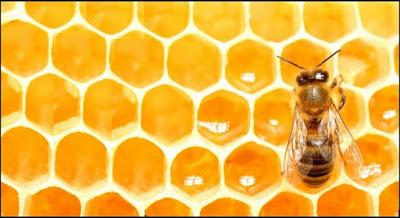Are you still with me? What a fun topic for a Saturday night - but don't worry, I'm not going to try and blind anyone with science as I'm neither clever nor painstaking enough to understand all the technical stuff that's involved. Can we just acknowledge that hexagons are the closest science gets to magic?
I think of it like this. When the wise and the wonderful (alchemists and their ilk) talked about "squaring the circle", what they were always going to end up with in practice was a regular hexagon: something slightly more engineered than a square with the corners knocked off (which would be an octagon), something with six sides which would be de facto the most efficient building-block that the universe has thrown up - maximum structural strength from minimal material resource, plus infinitely extensible in all directions in three dimensions and beautiful in its perfect symmetry...

Buckminsterfullerene
We can find the hexagon in everything from snowflakes to honeycombs, from turtle shells to basalt columns, from insects' eyes to carbon allotropes knows as fullerene nanostructures (as illustrated above). It's nature's way of demonstrating survival of the best fit; and we in turn have incorporated the magic hex into grand designs ranging from the modern football to vast geodesic domes (as first pioneered by the American architect Buckminster Fuller) such as those housing the Eden Project.We are probably most familiar with this hexagonal structure in honeycomb. Adele has already covered that angle admirably in her blog on the topic (check out Hexagons - A Bee Story), so I'll limit myself to a quick alert as to the more general plight of the bumble-bee and other species of small furry animals (arthropods in this case).
There are two hundred and fifty species of bee in the UK, of which over two hundred are species of solitary bee, twenty-five are species of bumble-bee and there is just one species of honey-bee. All bees are vital to the environment, principally as pollinators of everything from flowers to fruit and vegetable crops. Bee numbers have been in serious decline for the last several decades, climate change, disease, habitat loss and pesticides collectively taking a heavy toll. The Department of Agriculture, Environment and Rural Affairs has created a Bee Health Inspectorate and that body along with the National Bee Unit is at the forefront of stalling the decline. Bees need all the help they can get. If I had a larger garden I'd seriously consider acquiring hives and becoming a bee-keeper.

Sweet Honey-Bee
And so to this week's new poem, which takes as its starting-point Hamlet's famous soliloquy, re-engineered for our anxious honey-making friend and constructed in the shape of the week...Hexagony To be a bee or not to be a bee - that is the question. Whether 'tis nobler in the hivemind to suffer
the sting of narrow possibilities and a highly
rigorous regime subjugating the very will, or
to strike out lonely and fly into the unknown
pursuing mine own individuality,
inciting of the hex.
Thanks for reading. Support your local Bird & Bee, S ;-) Email ThisBlogThis!Share to TwitterShare to Facebook
Reactions:
